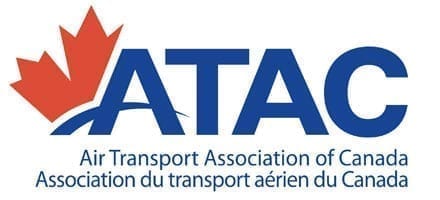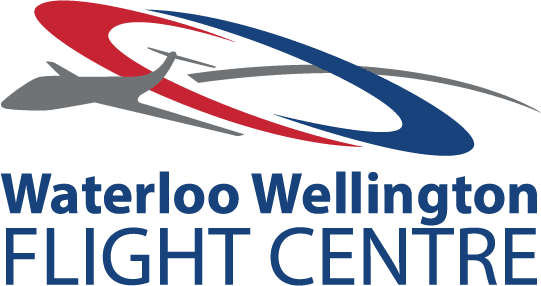
More than 500 people attended the Air Transport Association of Canada (ATAC) annual conference in Montreal from Nov. 6 to 8, 2017, but president John McKenna said numbers would have been even higher were it not for the current pilot shortage.
“We have members who are not here because of that–they have to stay home and fly,” McKenna told Skies at the show.
It is becoming increasingly difficult to encourage young people to train to become pilots, especially with a lack of flight instructors which causes flight schools to operate below capacity.
ATAC wants to educate Canadian youth about the rewards of an aviation career. One of the groups it will target is the Royal Canadian Air Cadets.
He said that as recently as a year ago, many of Canada’s larger carriers did not recognize there was a pilot shortage, but in the last few months it’s become increasingly evident that the industry has a problem.
“We have many companies who are parking planes. Some have lost 18 of their 36 experienced pilots in the last six months. How do you compensate for that? It’s incredibly difficult. In 2017, we started to really address this as an issue.”
At its annual spring meeting in May, ATAC made a discussion on pilot recruitment a priority. At that event, speaker Mike Doiron cited several studies showing a Canadian pilot shortage is now “very real.”
A working group was convened, meeting twice over the summer to discuss the topic and chart a path forward for the association. Members of that group outlined their progress to a room full of industry representatives on Nov. 8 in Montreal.
Panel member Bob Connors, who is general manager at Waterloo Wellington Flight Centre, said ATAC is taking the lead on the issue, with input from the Canadian Council for Aviation & Aerospace (CCAA), the College of Professional Pilots of Canada, and operators such as Sunwing, WestJet, Air Georgian, Jazz and Porter Airlines, among many others.
The group conducted a survey of ATAC’s flight school and carrier members to quantify flight training capacity in Canada. Of the 20 flight training units that have responded to date, all said they are not training at full capacity, mainly due to a lack of flight instructors.
Lynne McMullen, director of business development at the Seneca College School of Aviation, told the audience that although many schools surveyed are able to train Class IV instructors, roughly 50 per cent of them still require five or more instructors to reach capacity.
“There is a need to encourage people to consider flight instruction as a viable career option,” she said, adding that good instructors could move on to become training pilots with larger carriers.
To address the need for funding a comprehensive industry response to the pilot shortage, Robert Donald, CCAA executive director, said a pilot component was added to a proposal that his agency submitted to Employment and Social Development Canada (ESDC), the government agency responsible for employment, skills training and the federal labour market.
The ATAC working group further studied the availability of information and financial assistance for student pilots across Canada, with Air Georgian’s Gabriella Marsala outlining the need to create a “one-stop shop” where students, parents, educators and other interested parties can find out how pilots are training and where funding can be found.
“We need to come together as a community to create this one-stop shop,” she said. “How can we create it? And one of the biggest questions is, ‘Who is going to do it?’ ”
ATAC plans to inform young people about careers in aviation with increased brand awareness through its FlyCanada web page. Mike Reyno Photo
Several operators, including Sunwing Airlines, now offer programs that fast track young pilots from the classroom to the cockpit. Mike Reyno Photo
Among the other issues discussed at the session was what McKenna referred to as the “elephant in the room”–the fact that after spending close to $100,000 on training, new pilots can expect to start off on the low end of the pay scale.
“Clearly, wages are a problem,” he said. “Labour is the biggest cost. The margins are low in this business. When you have a low margin, an increase in the price of gas, for example, can be a big problem.”
However, it was also acknowledged that in the current employment climate, pilots will climb the career ladder quickly, with compensation increasing accordingly.
Moving forward, Bob Connors said the group aims to inform young people about aviation careers, will work to increase brand awareness through ATAC’s FlyCanada web page, and hopes to create an online site under the ATAC banner that will become a one-stop resource shop for prospective pilots.
Outreach targets include youth (especially the Air Cadets), educators, parents, government, media and the general public, and related institutions and organizations.
“Leverage is the underlying theme here,” said Connors, who invited all industry members to collaborate for the cause.
Pressing concerns
While the pilot shortage is a key concern for ATAC, association president John McKenna said the other big issue at the moment is flight crew fatigue and the new set of “prescriptive” flight and duty time regulations that is expected to see publication in Canada Gazette II by early spring.
Along with other aviation associations, ATAC has voiced strong opposition to the new regulations.
“No one is arguing fatigue needs to be managed,” said McKenna. “We’re not asking him [Transport Minister Marc Garneau] not to do this. We’re asking him to take a breather; take an extra year and do it right.”
He said that after the regulations are enacted, the industry will require an average of 25 per cent more pilots to provide the same level of service.
“Pilots don’t seem to realize they’ll work fewer hours, but more days,” said McKenna. “And it will threaten the livelihood of some companies. If suddenly your labour costs increase by [an average of] 25 per cent, some of the operators won’t be able to operate.
“Some routes that are not profitable will be dropped. If they have to double crew them, or have the crew stay overnight, some of these routes may be jeopardized. The cost of any airline ticket in Canada will go up. Finally, it’s going to put more pressure on the pilot shortage.”
Advertisement
ATAC is also focusing on a number of other issues, including the level of service being provided by Transport Canada. “We’ve had some marginal improvements over the past year, but in other areas there has been no change. It is still taking months for manual approvals or to simply add a new aircraft to an operating certificate.”
The uncertain spectre of airport privatization is also on the association radar. “Selling off airports for a one-time cash grab would be a monumental mistake,” said McKenna. “This has not proved to be a good experience anywhere in the world. It would be a detriment to our industry.”
During the past year, ATAC has also provided feedback on proposed restructuring options for the Canadian Air Transport Security Authority (CATSA), which is responsible for screening passengers and baggage at the country’s airports.
There will be no shortage of issues demanding the attention of incoming ATAC chair, Steve Hankirk, who is president of Canadian North. But on the bright side, McKenna said the pressing situations facing the industry today are translating into an increase in association membership.
“In the last year, we’ve had several operators come to the table–expecting something in return, of course,” he said. “They’re here because they get something out of it. Right now, they need our help on these things. People want someone to speak out on their behalf.”
